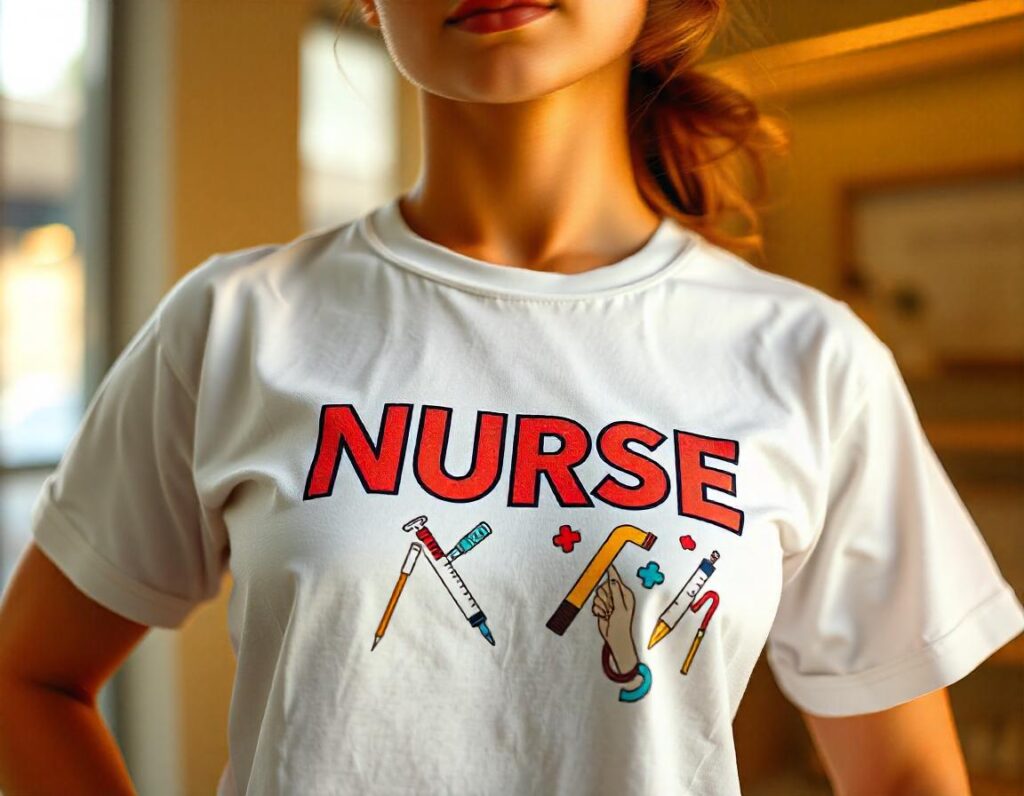DTF transfers, or Direct-to-Film transfers, represent a cutting-edge shift in textile printing, revolutionizing the way custom apparel is produced. This innovative technique allows high-resolution graphics to be printed onto a specialized film, facilitating a seamless transfer to a variety of fabrics using heat and pressure. With DTF technology, businesses can create vibrant designs that not only stand out but also maintain their clarity across different materials, making it a compelling choice for fashion-loving consumers. Additionally, the rise of sustainable printing practices makes DTF an eco-friendly option, as it significantly reduces water consumption and waste compared to traditional methods. As demand for personalized products grows, DTF transfers are poised to play a pivotal role in the future of the textile industry.
Direct-to-Film (DTF) transfers have emerged as a transformative force in the landscape of digital transfers, providing innovative solutions for fabric decoration. This state-of-the-art technique, commonly used in custom clothing production, combines advanced printing technology with high-quality results, enabling vivid and detailed designs on various textiles. As the prevalence of sustainable printing methods rises, DTF stands out by offering a more environmentally responsible alternative to conventional textile printing. The technique’s versatility allows it to cater to an array of fabric types, thus expanding the creative possibilities for designers and entrepreneurs alike. As the market continues to evolve, DTF technology is becoming increasingly vital for those seeking to make their mark in the competitive world of apparel.
Understanding DTF Transfers: A Revolutionary Textile Printing Method
Direct-to-Film (DTF) transfers represent a groundbreaking technique in the realm of textile printing, offering businesses the ability to create stunning designs with ease and accuracy. This process involves printing high-quality images onto a film, which is subsequently transferred to various fabrics using heat and pressure. The technology thrives on its capability to reproduce intricate patterns and vibrant colors that are resistant to fading, ensuring longevity in custom apparel. As manufacturers look for efficient ways to produce captivating designs, DTF technology emerges as a reliable solution.
Moreover, the DTF transfer method is not limited to conventional printing capabilities; it paves the way for experimentation across different fabric materials. This flexibility is a key advantage, as it allows designers to work with an array of textiles, catering to diverse customer preferences. Whether it’s creating striking visuals on cotton or intricate patterns on polyester, DTF’s adaptability makes it a robust choice for modern textile businesses aiming for versatility in their product lines.
The Benefits of DTF Technology in Custom Apparel
DTF technology offers numerous benefits that make it essential for custom apparel businesses looking to elevate their product offerings. One of the primary attractions of DTF transfers is their exceptional print quality, achieving brilliant color reproduction and intricate designs that meet the high standards of today’s consumers. Unlike traditional methods like screen printing, which can struggle with detail in smaller designs, DTF excels, ensuring that even the finest patterns remain vivid and accurate. This makes it a favorite choice for brands that wish to stand out in a saturated market.
Additionally, DTF printing is incredibly cost-effective and efficient. With lower operational costs and minimal setup required, businesses can produce high-quality garments without the financial burden associated with traditional methods. This efficient process allows for quicker turnarounds, meaning companies can respond faster to market demands and consumer trends. As a result, small and medium-sized enterprises are increasingly embracing DTF technology for its practicality in meeting the needs of custom apparel clients.
Sustainability in DTF Printing: A Greener Approach to Textile Innovation
In an era where sustainability is a crucial consideration for consumers, DTF printing stands out as an eco-friendly alternative compared to traditional textile printing methods. The DTF process minimizes water usage and reduces waste, making it a more environmentally responsible choice for businesses. As brands strive to align themselves with sustainable practices, integrating DTF technology into their operations can signal a commitment to eco-friendliness while still delivering on quality and style.
Furthermore, by leveraging DTF transfers, companies can cater to a growing demographic of conscious consumers looking for sustainable apparel options. By utilizing environmentally friendly materials and practices within the printing process, businesses not only reduce their carbon footprint but also attract eco-consumers who prioritize sustainable shopping. This trend not only enhances brand reputation but also opens up new market opportunities among environmentally aware customers.
Emerging Trends in DTF Technology
The landscape of DTF printing is rapidly evolving, with technological advancements prompting significant shifts in the industry’s dynamics. As the market grows, new DTF printers are designed to offer improved functionality, increased production speeds, and enhanced resolution capabilities. This evolution allows businesses to streamline their printing processes, enhancing overall productivity and reducing bottlenecks in production workflows. As more companies adopt these advanced machines, the standard of DTF transfers will continue to rise, particularly concerning quality and efficiency.
Additionally, the increasing integration of design software with DTF printers facilitates a seamless user experience. These developments empower users to create more complex designs without the need for extensive training, democratizing the textile printing market. This accessibility encourages more entrepreneurs and small businesses to venture into custom apparel without the fear of cumbersome design processes, fostering creativity and innovation across the industry.
Market Growth and the Future of DTF Transfers
The DTF printing market is on the brink of exponential growth, with projections indicating a potential market value of USD 1 billion by 2027. This upward trend can be attributed to the rising popularity of personalized and custom apparel among consumers. As brands seek innovative ways to meet customer demands for unique and tailored clothing options, DTF transfers will play a pivotal role in shaping the future of textile printing. Market analysts suggest that both established companies and emerging players will increasingly adopt DTF technology to enhance their competitive edge.
Moreover, the versatility of DTF printing positions it at the forefront of custom apparel production, enabling businesses to realize their creative visions while meeting diverse consumer preferences. As niche markets continue to expand, companies that embrace DTF technology will be well-equipped to adapt to changing trends and customer desires. The future looks promising for DTF transfers, offering vast opportunities for growth and innovation in the textile industry.
Frequently Asked Questions
What are DTF transfers and how do they work in textile printing?
DTF transfers, or Direct-to-Film transfers, are a cutting-edge textile printing method that involves printing high-resolution designs on a special coated film. This film is then transferred onto fabric using heat and pressure, allowing for vibrant and intricate custom apparel designs across various materials.
Why are DTF transfers becoming popular in custom apparel production?
DTF transfers are gaining popularity due to their exceptional print quality, versatility on different fabric types, and cost-effectiveness. Businesses can quickly produce detailed, multicolor designs while minimizing operational costs, making DTF technology a preferred choice in the competitive custom apparel market.
What sustainability benefits do DTF transfers offer compared to traditional printing methods?
DTF transfers are considered environmentally friendly as they use less water and generate minimal waste compared to conventional dyeing and printing processes. This eco-conscious approach aligns with consumer preferences for sustainable printing solutions in the custom apparel industry.
How does DTF technology impact market growth in the textile printing sector?
The DTF printing market is expected to grow significantly, projected to reach USD 1 billion by 2027. This expansion is driven by the rising demand for personalized products and the adoption of DTF technology by both small businesses and large corporations within the textile printing landscape.
Can DTF transfers be used on various types of fabrics?
Yes, DTF transfers are versatile and can be applied to a wide range of fabric types, including cotton, polyester, and blends. This flexibility allows creators to cater to diverse consumer tastes, making it an excellent option for custom apparel production.
What trends are shaping the future of DTF technology in textile printing?
Key trends influencing the future of DTF technology include ongoing advancements in printing equipment, increased focus on sustainability, and a widening user base. As more businesses, including startups, adopt DTF technology, it is becoming a standard practice in the textile printing industry.
| Key Point | Description |
|---|---|
| Overview of DTF Transfers | DTF transfers involve printing graphics onto a coated film, which is transferred to fabric using heat and pressure. |
| Exceptional Print Quality | Produces vibrant colors and intricate designs, maintaining clarity across various fabrics. |
| Versatility Across Fabric Types | Works well on cotton, polyester, and blends, allowing for diverse product offerings. |
| Cost-Effectiveness and Efficiency | Quick and economical process that reduces setup costs compared to traditional screen printing. |
| Technological Advancements | Emerging DTF printers with improved speed, resolution, and user-friendly features. |
| Eco-Friendly Practices | DTF printing consumes less water and produces minimal waste, appealing to eco-conscious consumers. |
| Market Growth and Expansion | Projected to reach USD 1 billion by 2027 due to increased demand for personalized products. |
| User Base Expansion | Affordable DTF solutions are empowering small businesses and start-ups to enter the custom apparel market. |
Summary
DTF Transfers are revolutionizing the textile printing industry, offering superior print quality, enhanced versatility, and eco-friendly solutions. As businesses increasingly adopt this innovative technology, its potential to transform custom apparel is becoming evident. The combination of affordability and efficiency positions DTF printing as a crucial asset for entrepreneurs, enabling them to cater to a growing market driven by personalized and sustainable apparel. With advances in technology and shifting consumer preferences, DTF Transfers are not just a passing trend, but a foundational element that is reshaping the future of textile printing.



